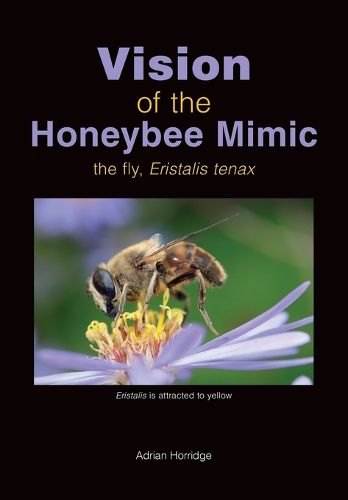Readings Newsletter
Become a Readings Member to make your shopping experience even easier.
Sign in or sign up for free!
You’re not far away from qualifying for FREE standard shipping within Australia
You’ve qualified for FREE standard shipping within Australia
The cart is loading…






This title is printed to order. This book may have been self-published. If so, we cannot guarantee the quality of the content. In the main most books will have gone through the editing process however some may not. We therefore suggest that you be aware of this before ordering this book. If in doubt check either the author or publisher’s details as we are unable to accept any returns unless they are faulty. Please contact us if you have any questions.
Among the fly family Syrphidae are many examples of bee mimics, mostly of the genus Eristalis, among which we found the world-wide common dronefly, Eristalis tenax, most convenient for detailed study, as there is no sting. As would be expected for a fly, the eye is much larger than that of the honeybee.
Our analysis revealed it as a typical fly visual system with some specialised differences related to detection of movement and foraging among flowers for nectar. Eristalis does not mimic the honeybee in any way except appearance. The life histories are totally different. Eristalis has an aquatic larva that lives in nutritious rubbish, in which it has travelled independently around the world in bilge water of ships.
$9.00 standard shipping within Australia
FREE standard shipping within Australia for orders over $100.00
Express & International shipping calculated at checkout
This title is printed to order. This book may have been self-published. If so, we cannot guarantee the quality of the content. In the main most books will have gone through the editing process however some may not. We therefore suggest that you be aware of this before ordering this book. If in doubt check either the author or publisher’s details as we are unable to accept any returns unless they are faulty. Please contact us if you have any questions.
Among the fly family Syrphidae are many examples of bee mimics, mostly of the genus Eristalis, among which we found the world-wide common dronefly, Eristalis tenax, most convenient for detailed study, as there is no sting. As would be expected for a fly, the eye is much larger than that of the honeybee.
Our analysis revealed it as a typical fly visual system with some specialised differences related to detection of movement and foraging among flowers for nectar. Eristalis does not mimic the honeybee in any way except appearance. The life histories are totally different. Eristalis has an aquatic larva that lives in nutritious rubbish, in which it has travelled independently around the world in bilge water of ships.